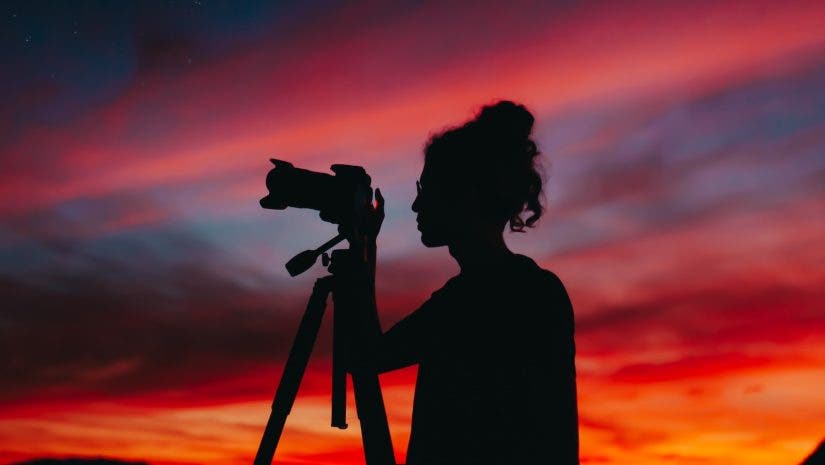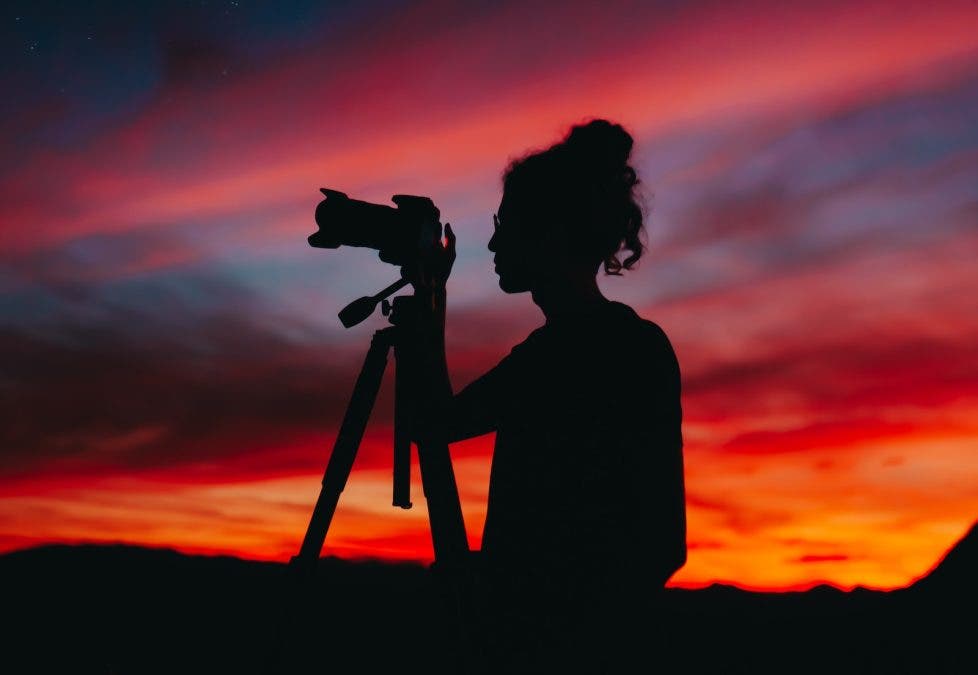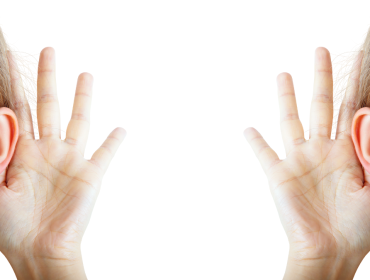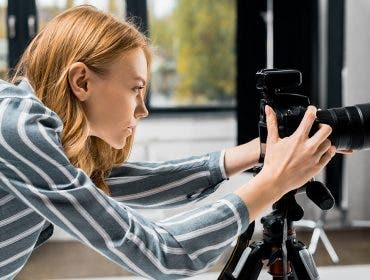We may discuss sharpness and clarity in the context of photography and videography a lot, but we have a good reason to do so. Lack of camera stability is probably the number one reason for ruined images. And yes, cameras and lenses may have built-in image stabilization and camera-shake reduction systems, but the truth is, they are rarely enough. One simply can’t expect the same results of the best tripods or creativity when shooting with a handheld camera as when using a sturdy tripod to stabilize it.
Moreover, nowadays, there are so many types of tripods on the market that one can’t complain that no product offers what they need or that using a tripod disturbs the workflow. To prove our point, we’ve searched for tripods that support your workflow and provide stability in any context. Here they are.
1. Best Tripod for Studio Use
If you think you don’t need a tripod when shooting from the comfort of a studio, think again. Studio sessions are long, take a lot of adjustments (e.g., camera angle, lighting, subject pose, etc.), and rely on professional cameras, which are rarely lightweight. A tripod will release you from supporting the weight of the camera-lens combo. It will allow you to use tether shooting, and ensure the camera stays in the exact same position for consecutive shots.
For studio use, you need a sturdy tripod, able to support the camera load and any additional accessories. At the same time, you don’t have to worry about the tripod’s weight, portability, and usability. You have time to do a proper setup and hardly move the tripod around. Therefore, an aluminum tripod with fewer leg sections is your best choice. It is a robust choice, and more affordable.
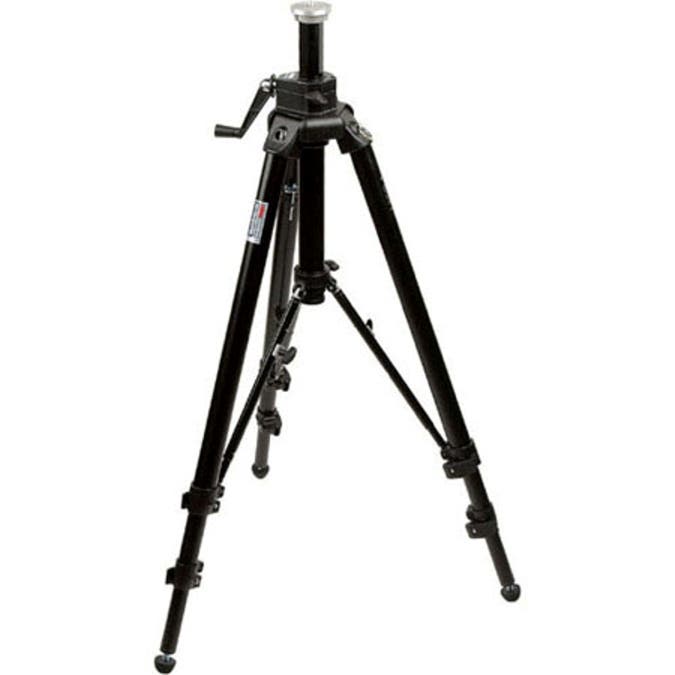
We’ve chosen the Manfrotto 475B Pro for its outstanding sturdiness and reliability. Despite these, it is easy to use (two “click stop” positions and a spirit level for easy tripod leveling), fast to set up (quick-action leg locks), and versatile (a unique center brace strut system that allows for both symmetric and asymmetric operating modes).
2. Best Tripod for Outdoor Use
If you plan to use the tripod mostly outdoors, you must consider setup speed, weight, portability, grip, and weather resistance. You will most likely require versatility, a fast setup, and a shorter folded length. This is the only tripod you’ll carry on location, so it must stick on any surface, provide as many heights and shooting angles as possible, and resist dust, water, and extreme temperatures. It must also be easy to use and provide a quick setup. Because you won’t have time to fiddle with the tripod in an unpredictable outdoor environment.
So, for outdoor use, your best tripod choice is an ultra-fast setup, lightweight carbon fiber tripod with at least three leg sections to be easier to install, packable, and still able to deliver a nice shooting height. You may also want a center column for more stability and rubber feet with spikes for more grip on soft surfaces, such as grass and mud.
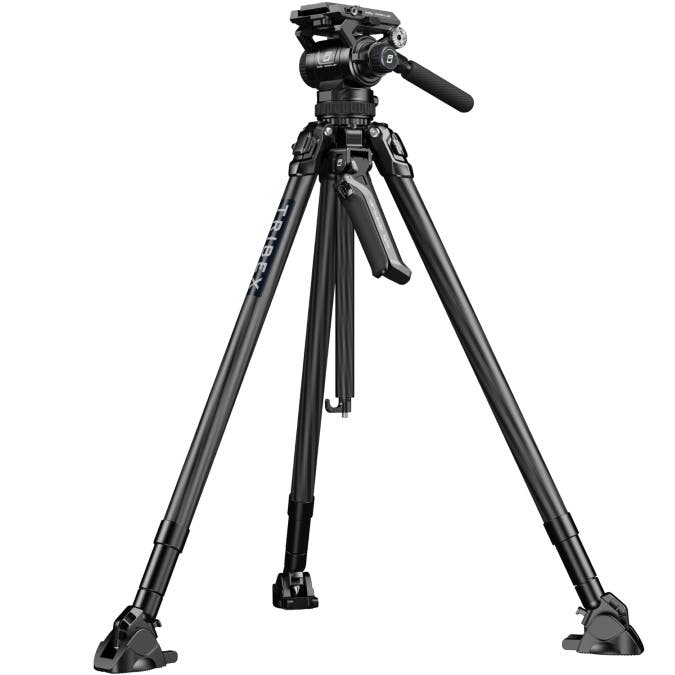
The SmallRig x Potato Jet Tribex Hydraulic checks all the boxes for the optimal outdoor tripod. It features a 3-section leg design with X-clutch hydraulic technology for seamless operation while on the field. The tripod will be in place, and you will be ready to shoot in seconds. Even the center column benefits from a quick-lock system.
To match any terrain, the tripod features quick-release rubber feet with integrated spikes. Made from carbon fiber, it is compact and portable. The tripod comes in two variants. One with just the tripod and one with a lightweight hydraulic fluid head which has a 6-step counterbalance system and a detachable telescopic handle that can be attached on either side for more adaptability and precision. Even though the head is aimed at videographers, it is also well-suited for longer lenses, and users shooting both video and still, but needing an ultra-fast setup.
3. Best Tripod for Heavy Loads
A DSLR camera and telephoto lens combo takes a toll on a tripod. Add a flash unit and other accessories, and the load may easily exceed 20 lbs (9 kg). If this is your regular workflow, load capacity is the tripod’s number one feature you should consider. However, you should also be interested in stiffness, as telephoto lenses are more sensitive to camera shake and vibrations than wide-angle lenses.
For heavy loads, choose a carbon fiber tripod (stiffer than aluminum ones and less likely to transmit vibrations) with fewer leg sections (more stable) and high load capacities. To avoid destabilizing the tripod by placing a heavy weight at the top, choose a tripod with a center column and hang something heavy on it for balance.
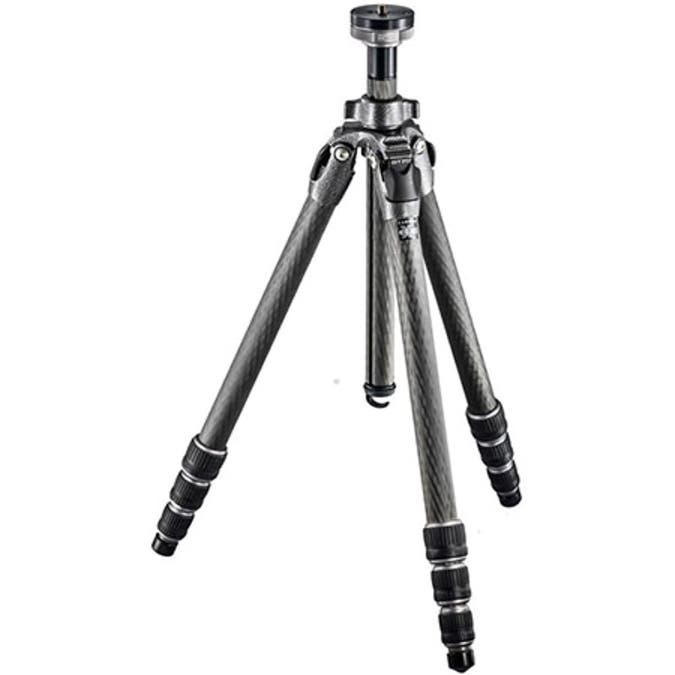
The Gitzo GT2542 Mountaineer Series 2 fully meets the load capacity requirements. It can hold up to 48.5 lbs (22kg) of gear. However, thanks to its carbon fiber design, the tripod remains lightweight (i.e., it weighs 3.7 lbs / 1.68 kg) and portable (i.e., it folds to 22.05 inches / 56cm). You’ll also appreciate the maximum height (65.75 inches / 167 cm) that allows you to comfortably shoot from your eye level. Thanks to its removable center column, the tripod can hold the heavy gear as close as 5.91 inches (15.01cm) from the ground.
In addition, the four-section legs have twist locks with an internal O-ring to protect them from dust and other particles. For a fast setup, the tripod features preset leg angles at 23, 55, and 83 degrees and large leg angle selectors with built-in springs. The rubber feet are removable, so you can replace them when they wear out or when you need something different.
4. Best Tripod for Travels
Travel photos and videos get a separate category because they usually require something a bit different from a tripod. Most likely, you use a lightweight camera and lens combo, no flash, and a minimum of accessories. Hence, load capacity is not an issue. However, discretion and flexibility are. Travel images may be captured in crowded, hectic places where a voluminous setup will be disruptive. You still need stability and sharpness, but also a setup that takes little space, for instance, a monopod.
Furthermore, consider whether you need to get in front of the camera from time to time. Maybe you’d like to record a vlog or Instagram reel on your phone in the morning and capture professional photos in the evening. As you only take one tripod with you, it must be able to support a professional camera and lens combo (e.g., a carbon fiber construction), adapt to every situation (e.g., a ball head), work with a smartphone, and stay secure on any surface.
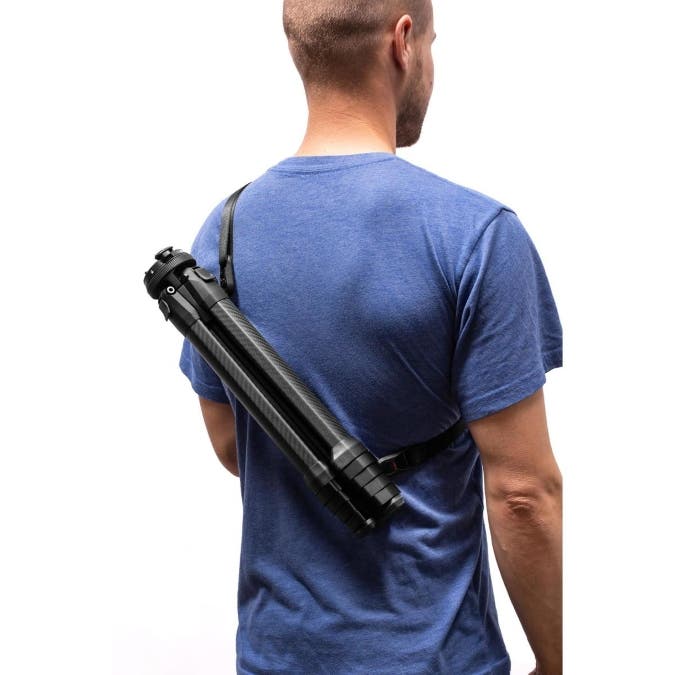
The Peak Design’s carbon fiber tripod is an excellent choice for travel photos and videos. It weighs only 2.8 lbs (1.27kg) and features a 5-leg design that allows it to reach a folded length of 15.5 inches (39.37cm). At the same time, the maximum working height of 60 inches (152.40cm) and the minimum working distance of 5.5 inches (13.97cm) give you all the artistic freedom you need when on the road. You’ll also appreciate the quick flip lock system, the non-slip, shock-absorbing rubber feet, the reversible and removable center column with integrated load hanging hook, the ergonomic ball head, and the built-in, stowable mobile mount.
5. Best Tripod for Moving Subjects
If, like me, you love photographing moving subjects, like birds and wildlife, you probably prefer a tripod with a gimbal head. The gimbal head allows you to move the camera anyway you like and then just locks the position. It makes tracking moving subjects very easy and ensures you always get the focus you are after.
Furthermore, you will most likely be stationary and use heavy telephoto lenses when shooting moving subjects. As a result, you need a sturdy, robust tripod, able to support the load of your camera-lens combo. Consider the environment, as well. If you carry your gear in a backpack, a carbon fiber tripod is better than an aluminum one.
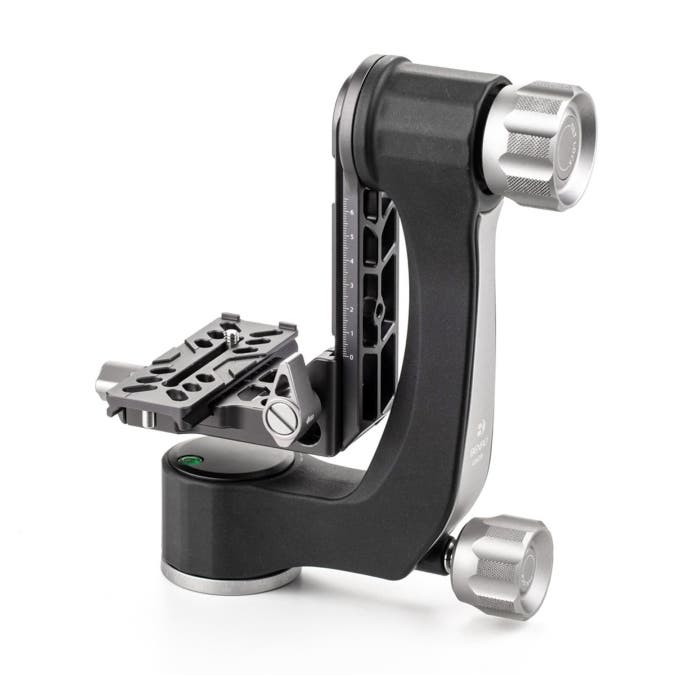
The Benro GH2N is a robust aluminum gimbal head that can support up to 55 lbs (25kg) of gear, which means you are safe even with an 800mm lens. It features an ingenious design with a reinforced rib and hollow structure that optimizes both weight and strength. This gimbal head is as sturdy and durable as it can be. Nevertheless, it is compact and portable, features separate adjustments for pans and tilts, and is equipped with a pan scale and bubble level.
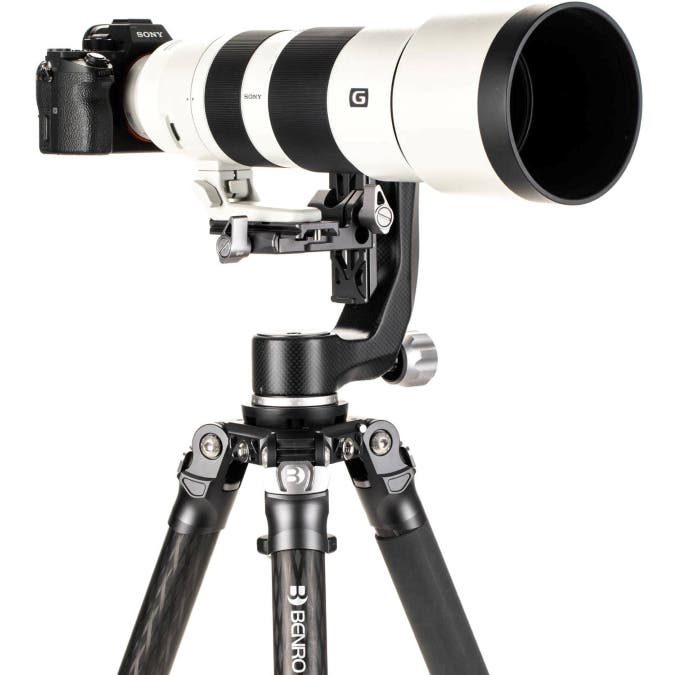
Combine it with the Mammoth TMTH44C for an ultimate experience. Engineered to support heavy camera setups, the tripod is sturdy, reliable, and stable. It reaches a maximum height of 62.99 inches (160cm) and an impressive minimum height of 5.51 inches (14cm). The tripod’s 75mm bowl and 3/8-16″ thread allow you to attach a wide range of tripod heads based on your artistic purpose and workflow. You’ll also appreciate the versatility of the interchangeable feet, the three-stop adjustable leg locks, the weight hook, and the three integrated 3/8″ accessory mounting holes for adding accessories.
6. Best Tripod for Still and Video
Content creators need a one-size-fits-all tripod. It must stabilize the camera for taking still images and recording videos, set up in seconds, tackle any terrain and environment, and convert into a monopod on demand. There is no limitation in camera movements, so a ball head is your best choice here. You also want it to be lightweight, portable, durable, and user-friendly. But don’t worry, there are tripods on the market that check all the requirements of a content creator.
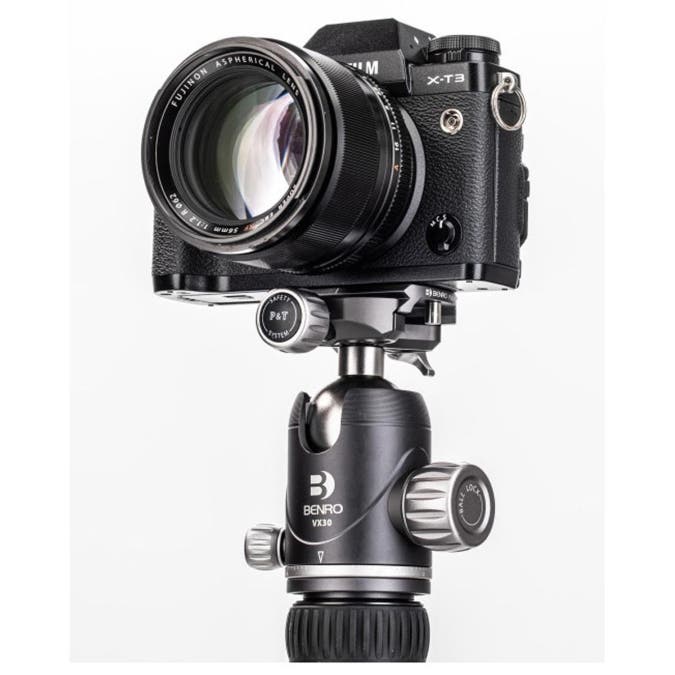
The Rhino Three Series is one of those all-features-included tripods. It features a lightweight and resistant carbon fiber body but can hold up to 44.09 lbs (20kg). Its height ranges from 19.33 inches (49 cm) to 68.70 inches (1.75 m). It has automatic leg adjustments, a ball head with two panoramic modes, pan lock, and quick-release platform, a center column, twist leg locks, and rubber feet. And, of course, it converts into a monopod.
7. Best Tripod for Vlogging
Vlogging requires a tripod that can adapt to any situation and surface and, most importantly, support the camera while you are in front of it. Therefore, the tripod may find itself on a desk, hanging from a tree, handheld, or on the ground. Panning and tilting should have no limitations either. In addition, a tripod for vlogging should be portable, discreet, adapted to hold a variety of devices, and extremely resistant.
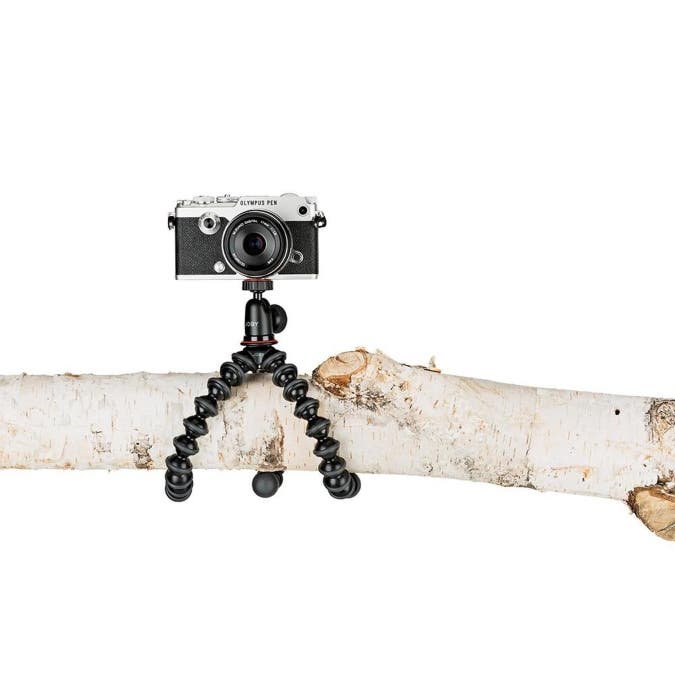
The GorillaPod 1K is a powerful mini-tripod made of resistant plastic and able to support up to 2.2 lbs (1 kg) of gear. It has flexible legs that can wrap around a tree branch or bar and provide any imaginable shooting angle. The GorillaPod 1K comes with a removable ball head with outstanding performance. The head has 360-degree panning and +/-90-degree tilt capabilities, which means you can shoot in landscape or portrait orientation seamlessly.
Final Thoughts
When selecting a tripod, it is essential to consider the specific requirements of your photography or videography projects. Whether you are a content creator, vlogger, or professional photographer, the appropriate tripod can significantly enhance the quality of your images. We have provided exemplary models of tripods that meet various needs while delivering exceptional performance. Use these examples as a guide to identify the tripod that best aligns with your workflow.
